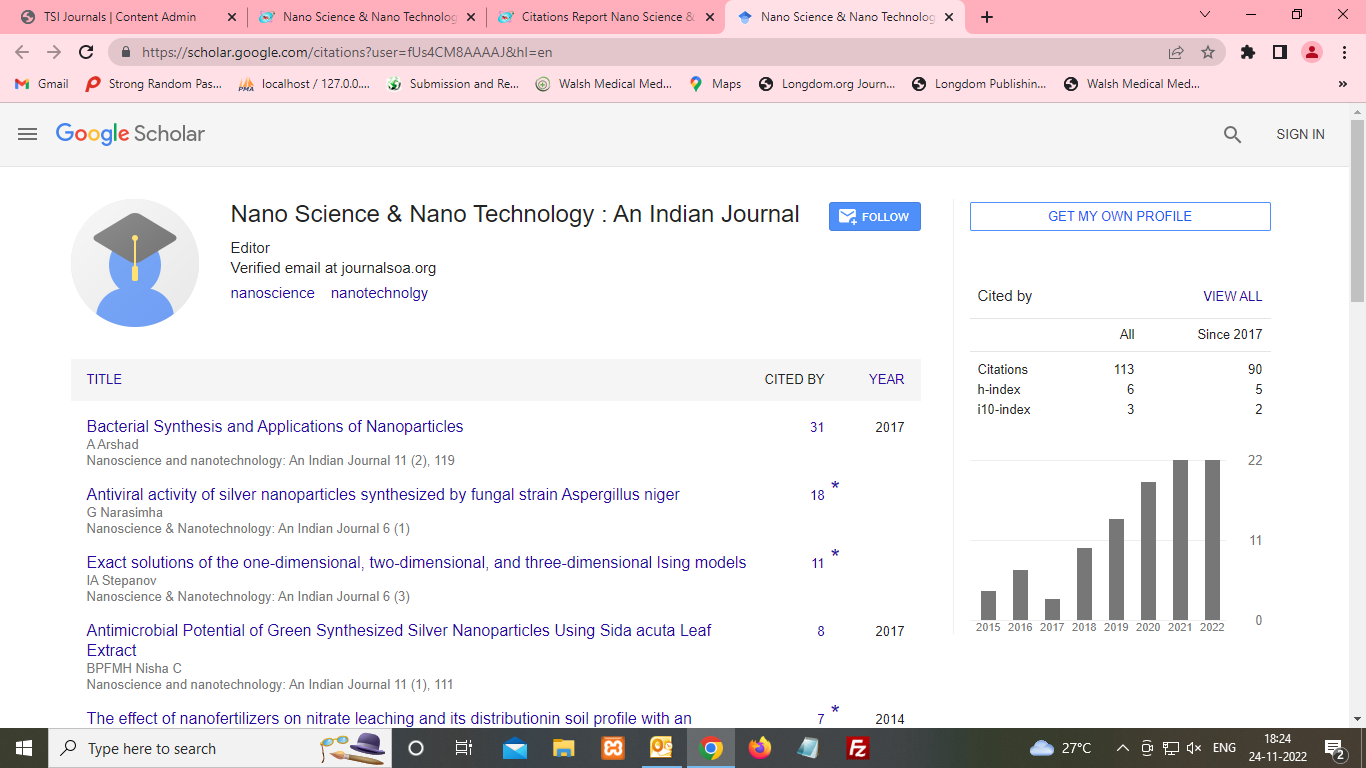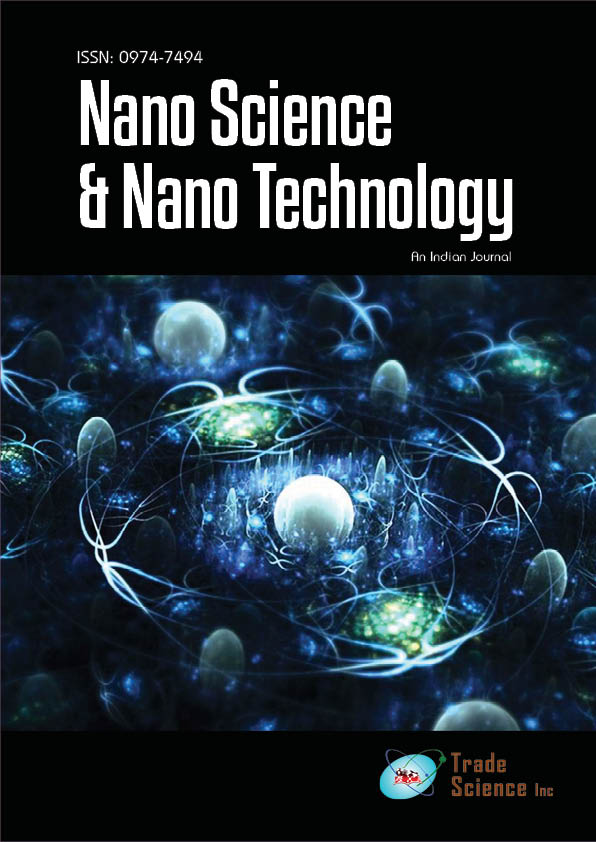Short commentary
, Volume: 16( 1) DOI: 10.37532/ 0974-7419.2022.16(1)Nanotechnology: A Therapy Option with Great Prospects and Benefits for Cardiovascular Ailments
- *Correspondence:
- Adrianna Phillips Editorial office, Nanoscience & nanotechnology: An Indian Journal, UK. ; E-mail: info@tsijournals.com
Citation: Jackson R. Nanotechnology-A Therapy Option with Great Prospects and Benefits for Cardiovascular Ailments. Nano Tech Nano Sci Ind J. 2022;16(1):143.
Abstract
Nanotechnology is a novel means of controlling and utilizing matter at the molecular level, with functional organization measured in nanometers. In his lecture "There's Plenty of Room at the Bottom," profound insight into nanotechnology in the 1950s, Feynman, a charismatic, imaginative, and witty leader, suggested to people that there are no physical barriers to manipulating individual atoms and molecules, and inspired the development of nanotechnology. Smalley discovered the structure of the Nano-macromolecule fullerene, an exquisite and flawless structure with unique properties that have piqued scientists' curiosity in studying additional Nano molecular forms. Nanotechnology, a fascinating science, has seen explosive growth in recent decades. Nanotechnology is strongly linked to medical research because nanoscale events play a significant role in cell signal transmission, enzyme function, and the cell cycle. A nanotechnology is a tool for structural study at the atomic and cellular levels, as well as designing and manufacturing synthetic biomaterials on a nanoscale, with new therapies and alternative materials developing.
Introduction
Nanotechnology is a novel means of controlling and utilizing matter at the molecular level, with functional organization measured in nanometers. In his lecture "There's Plenty of Room at the Bottom," profound insight into nanotechnology in the 1950s, Feynman, a charismatic, imaginative, and witty leader, suggested to people that there are no physical barriers to manipulating individual atoms and molecules, and inspired the development of nanotechnology. Smalley discovered the structure of the Nanomacromolecule fullerene, an exquisite and flawless structure with unique properties that have piqued scientists' curiosity in studying additional Nano molecular forms. Nanotechnology, a fascinating science, has seen explosive growth in recent decades. Nanotechnology is strongly linked to medical research because nanoscale events play a significant role in cell signal transmission, enzyme function, and the cell cycle. A nanotechnology is a tool for structural study at the atomic and cellular levels, as well as designing and manufacturing synthetic biomaterials on a nanoscale, with new therapies and alternative materials developing.
Role of NPs in CVDs
NPS can transport targeted medications across blood and tissue flow due to their unique size, physical features, and chemical makeup. It can also stay in tissues and organs for long periods of time, allowing it to improve imaging or conduct other unique nanoscale tasks. As a result, NPS is primarily employed for improved medical imaging, targeted delivery of diseased cells, and targeted medication administration.
NPS in Coronary Artery Disease Detection and therapy (CAD)
CAD is the accumulation of atherosclerotic plaque on the inner wall of the coronary artery, resulting in cavity stenosis, reduced vascular wall compliance, and progressive or sudden loss of blood flow to the damaged myocardium. Atherosclerosis is a chronic illness characterized by arterial wall thickening and atherosclerotic plaque inflammation. When coronary arteries are fully clogged by atherosclerosis, a heart attack occurs. Hypoxia of Cardiomyocytes (CMs) causes a cascade of complicated and interconnected physiological reactions involving a variety of cells, cytokines, and Extracellular Matrix (ECM). All of these events result in the loss of cardiac function, which is followed by the formation of fibrous scars to replace the myocardium.
Applications of NPs in hypertension
Nanoemulsion, liposome, polymeric NPs, Solid Lipid NPs (SLNs), and nanostructured lipid carriers have all been employed in the treatment of hypertension thus far. Olmesartan, which lowers blood pressure by inhibiting the angiotensin II-AT1 receptor selectively, that has poor oral absorptivity and availability due to low water solubility and permeability.
Applications of NPs in the treatment of atrial fibrillation
The most prevalent clinical arrhythmia is Atrial Fibrillation (AF), which accounts for almost one-third of all arrhythmia-related inpatients. Because of the increased risk of stroke, AF has a major impact on morbidity and death in patients. Catheter ablation has been a popular therapy option for patients with drug-resistant AF. However, a lack of knowledge of the processes behind the onset and persistence of AF has hampered cardioversion success and maintenance. Yu suggested a new ablation method based on functionalized Magnetic Nanoparticles (MNPs). Previous animal studies have shown that the Ganglionated Plexus (GP) plays a key role in the onset and maintenance of AF, and clinical data suggests that ablation of the major GP can improve the effectiveness of routine pulmonary vein isolation by catheter ablation.
Application of NPs in the treatment of AMI
To enhance heart function at the site of AMI, a chitosan-alginate NP containing Placental Growth Factor (PlGF), a crucial molecule in angiogenesis and vasculogenesis, is used. The findings showed that in the treatment of AMI, employing NPS as a carrier rather than direct injection of PlGF can give a prolonged release of PlGF and boost the favorable effects of growth factors on acute myocardial ischemia.
Application of nanotechnology in cardiac and cardiothoracic surgery robots
Nanotechnology, as a new sort of science, offers physicians a bright future and promises for achieving goals that had previously been thought difficult to reach, but more research and use of nanotechnology are still required. Nanomedicine holds a lot of promise in the treatment of coronary artery disease.

